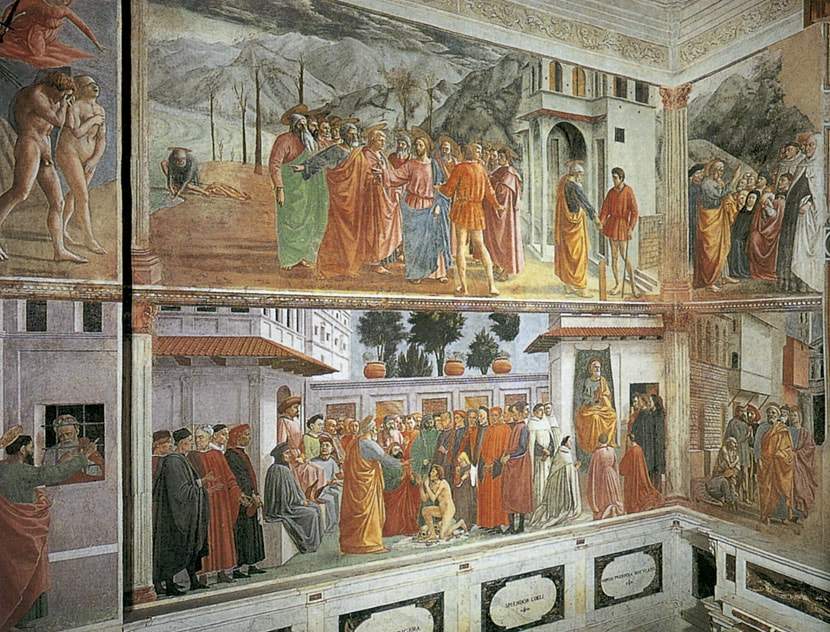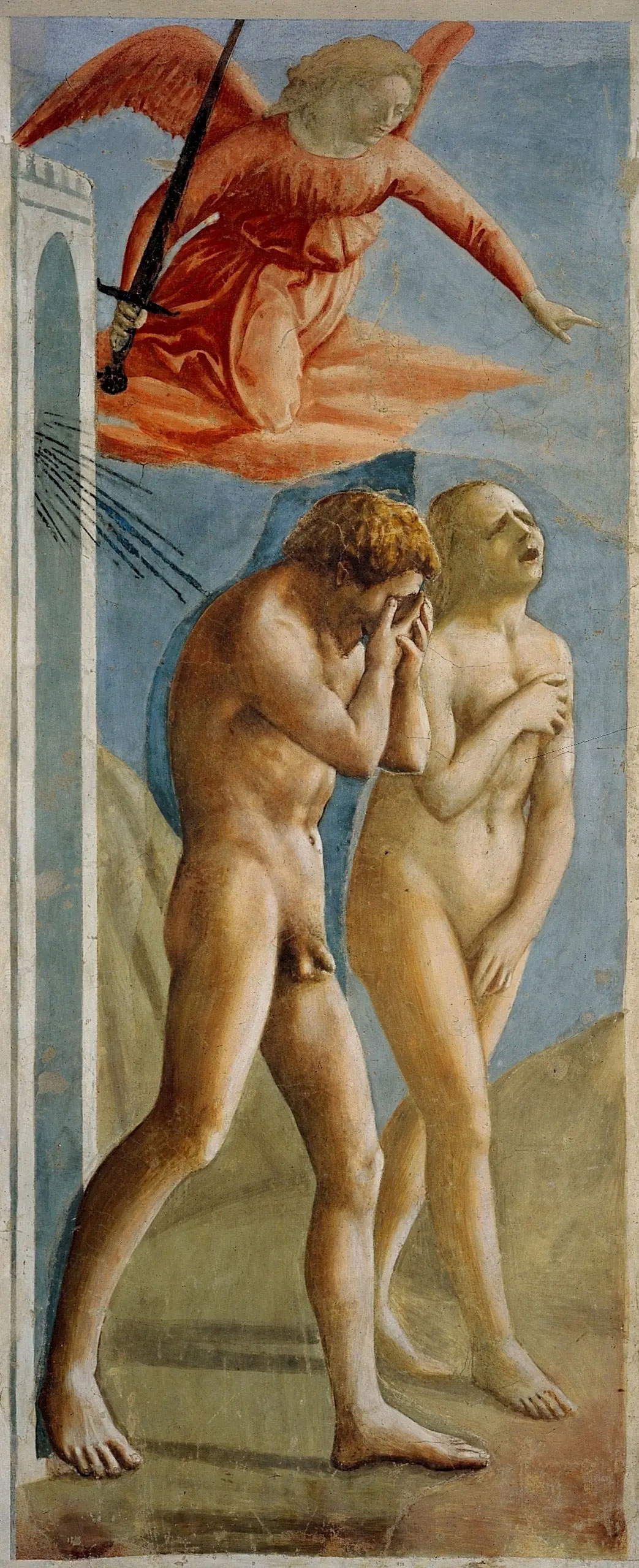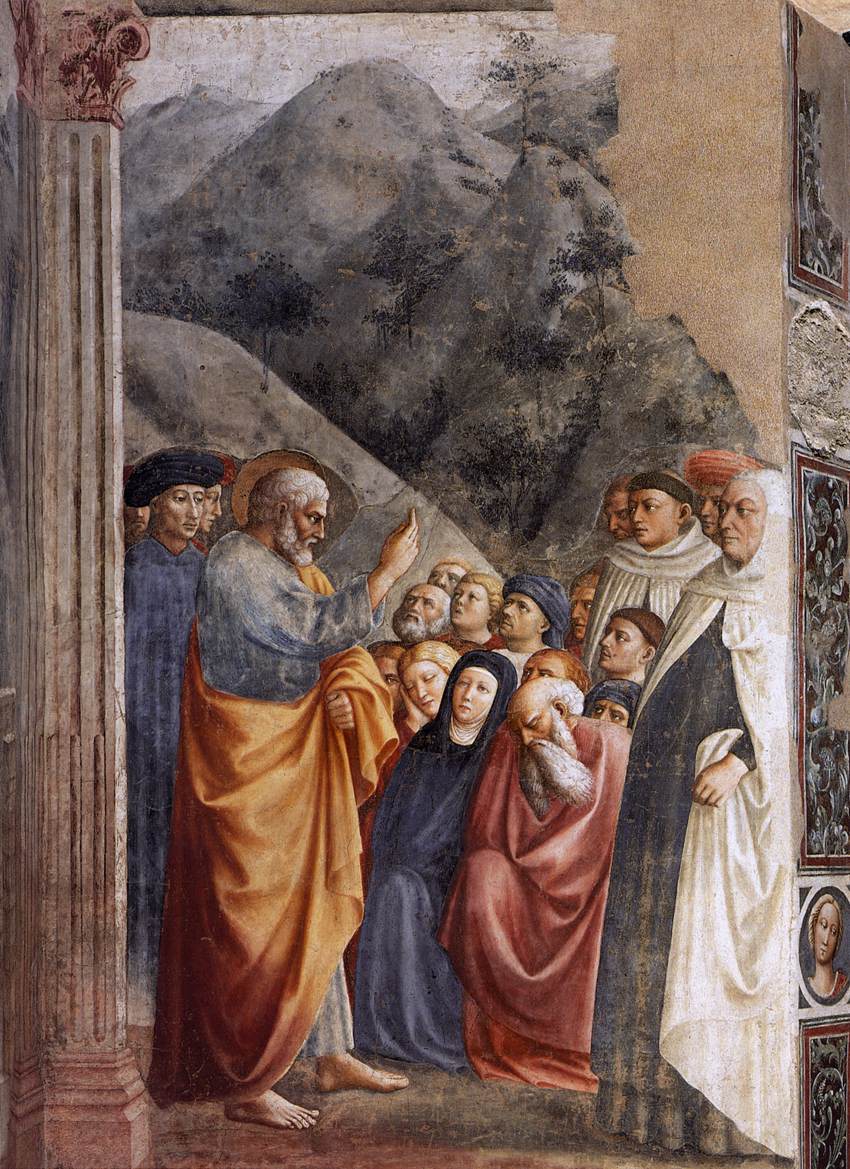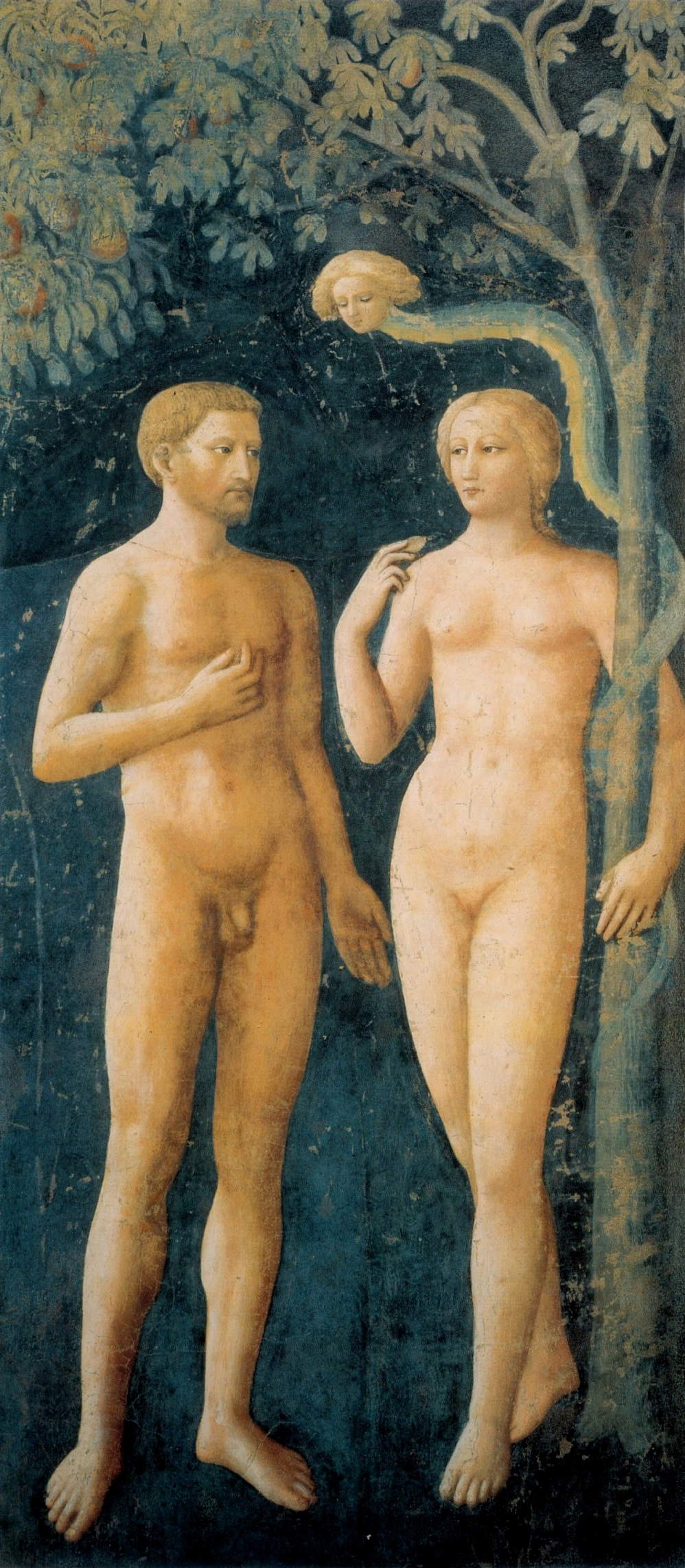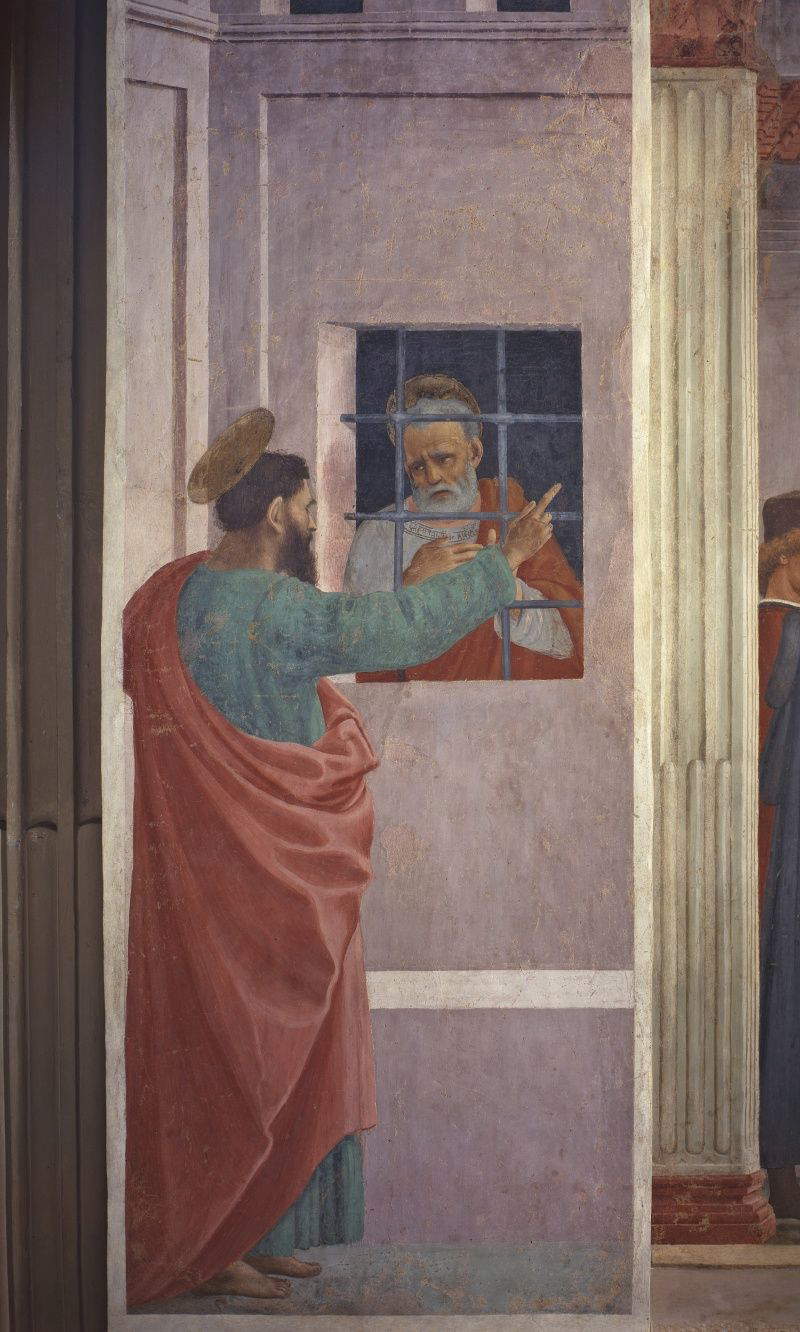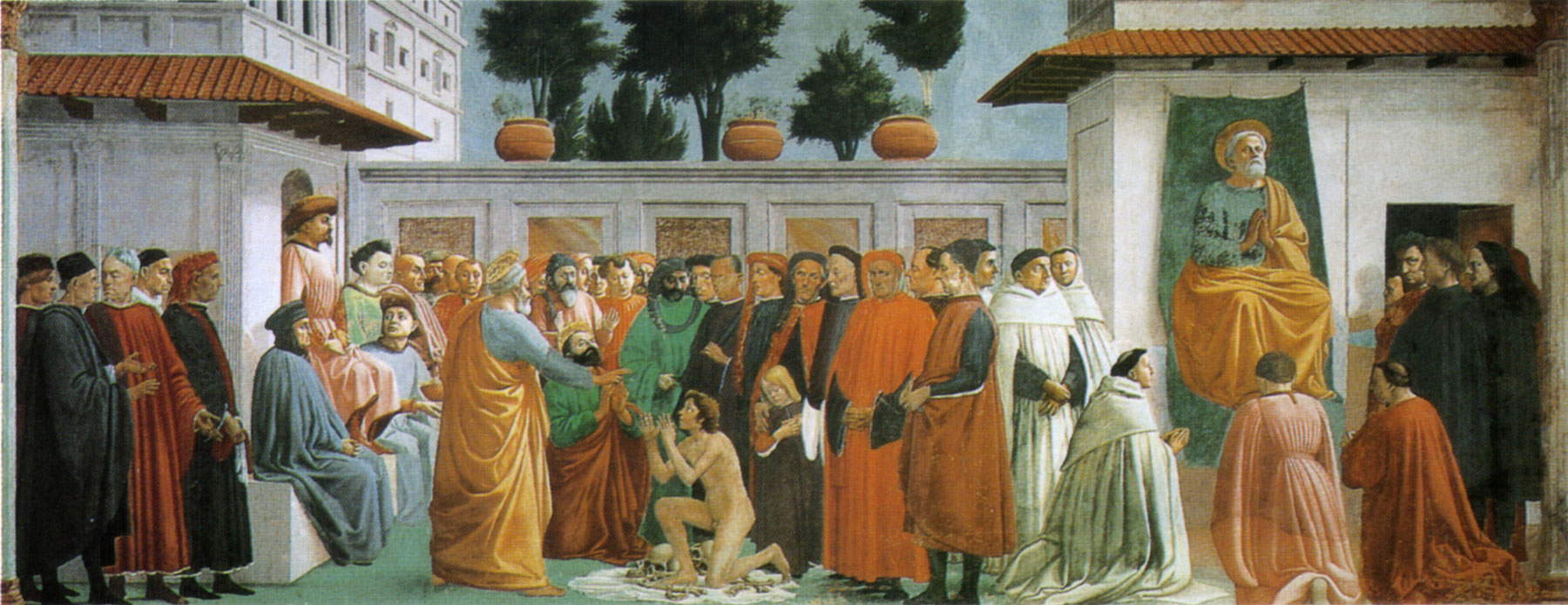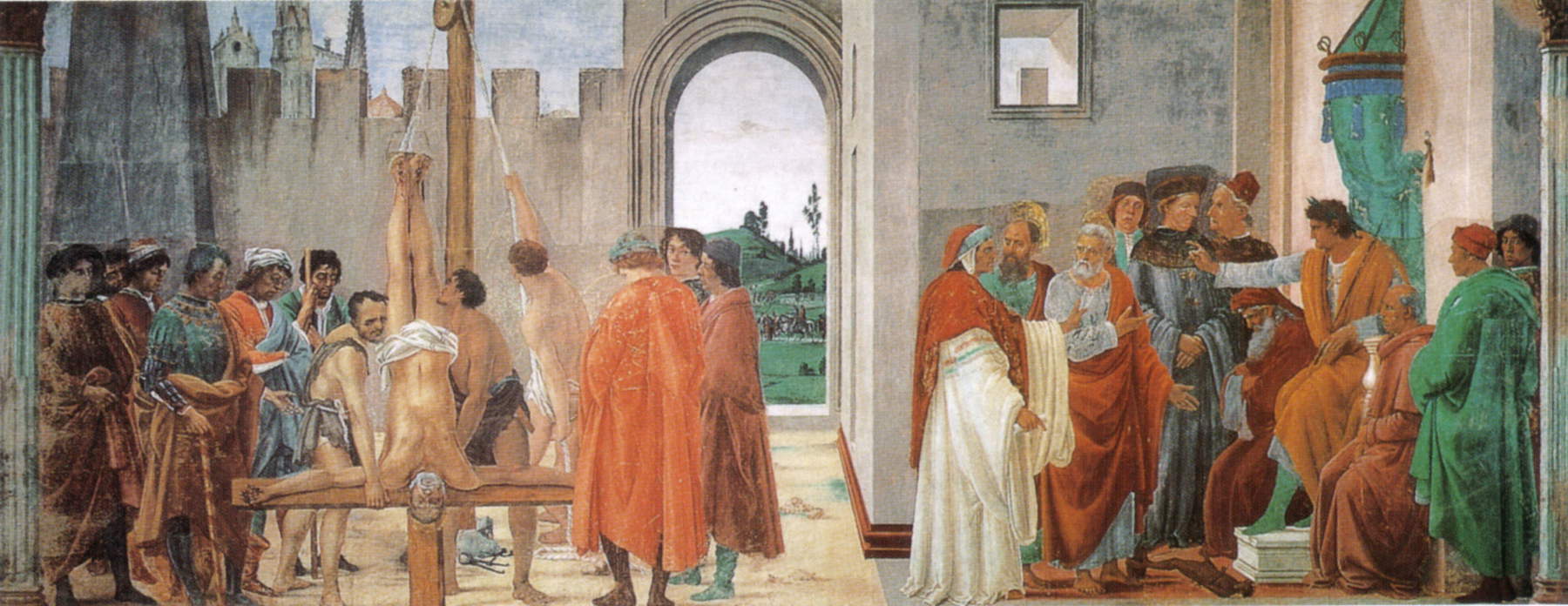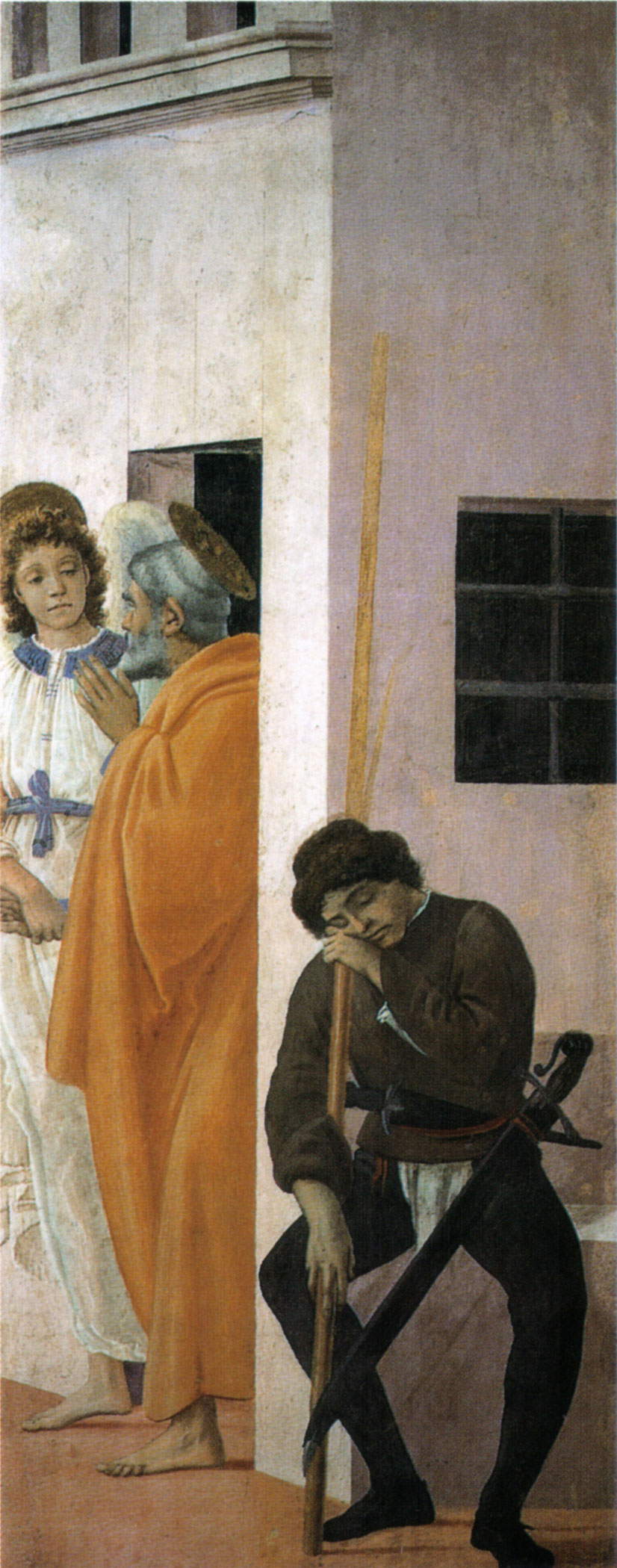by Francesca Interguglielmi , published on 29/07/2021
Categories: Works and artists
/ Disclaimer
In Florence, the frescoes of the Brancacci Chapel, a masterpiece by Masaccio and Masolino later completed by Filippino Lippi, are one of the pinnacles of all-time Italian art. Ingres had called them "the true cradle of painting."
In Florence, in theOltrarno area, among the many magnificent places that can be visited, one was described by the neoclassical painter Jean-Auguste-Dominique Ingres as the “true cradle of painting.” This is the Brancacci Chapel, which is located inside the church of Santa Maria del Carmine. This chapel was under the patronage of the Florentine Brancacci family from the second half of the 14th century until 1780, later passing to the Riccardi. The fame of this chapel is due to the presence of an extraordinary cycle of frescoes created by Masaccio (Tommaso di Mone Cassai; Castel San Giovanni, 1401 - Rome, 1428) and Masolino da Panicale (Tommaso di Cristoforo Fini; Panicale, 1383 - Florence, 1440) and completed by Filippino Lippi (Prato, 1457 - Florence, 1504). These paintings were commissioned by Felice Brancacci, who was the patron of the chapel from 1422 until about 1436. Felice Brancacci, a member of the Florentine ruling class and son-in-law of Palla Strozzi (commissioner of Gentile da Fabriano’sAdoration of the Magi ), held a number of important public offices, including that of ambassador to Cairo. It was probably after his return from this ambassadorship in 1423 that he commissioned the frescoes in the chapel in the Church of the Carmine, depicting stories concerning St. Peter and two moments from Genesis.
The Brancacci Chapel has a fairly eventful conservation history, and its present appearance is the result of a series of events and changes in which it has been involved. The changes began early, when patron Felice Brancacci, after falling from grace, was exiled in 1435 and declared a rebel in 1458. The chapel changed dedication from St. Peter’s to Our Lady of the People, whose 13th-century effigy was placed above the altar, and all references to the Brancacci family were removed. Other changes occurred in 1670: carved and gilded wooden frames were inserted to divide the two orders of frescoes. Also in 1674 some interventions were made with marble, such as the backs, the floor was redone, the altar steps and the balustrade, also in marble. Probably on this occasion plant shoots were painted to cover the nudity of the Progenitors. The 1680s is a decisive date in the history of this chapel: Marquis Francesco Ferroni, intending to purchase it, proposed to remove the frescoes to update the chapel’s taste. Grand Duchess Vittoria della Rovere strongly opposed this, preventing its destruction. In 1746-48, this place underwent profound changes: the vault, which according to sources housed the evangelists painted by Masolino, was dismantled. In 1771, a devastating fire ravaged the church and also caused damage to the Brancacci Chapel. Nine years later, the chapel was purchased by Marquis Gabriello Riccardi, who restored it and opened it to the public again. Among the conservation work on the frescoes in this chapel, the 20th-century work conducted by Ugo Procacci was fundamental. In fact, the removal of two slabs of the 18th-century altar allowed a deeper understanding of the frescoes, clarifying some stylistic aspects and recovering clues about the original color. The pictorial surface, largely blackened by candle smoke, was cleaned, restoring the colors to their former glory. The plant shoots that covered the naked bodies of Adam and Eve were also removed.
 |
| View of the Brancacci Chapel |
 |
| The left wall |
 |
| The right wall |
As mentioned, a cycle concerning stories from the life of St. Peter is depicted on the walls of this chapel, drawing the events from the Gospels, the Acts of the Apostles and the Legenda Aurea. Starting on the left wall, upper order, are the Expulsion of the Progenitors, the Tribute, the Preaching to the Crowds, the Baptism of the Neophytes, the Healing of the Lame Man and the Resurrection of Tabitha, and the Temptation of Adam and Eve. Continuing in the lower order, starting from the left we find St. Peter being visited in prison by St. Paul, the Resurrection of the son of Theophilus and St. Peter in the Chair, St. Peter Healing with the Shadow, the Distribution of Alms and the Death of Ananias, the Dispute with Simon Magus and the Crucifixion of St. Peter, and the Liberation of St. Peter from Prison. The presence of the two episodes concerning the Progenitors combined with the stories of St. Peter can be read as depicting the fall into sin of man who can find salvation in the Church, entrusted by Jesus precisely to Peter. The Temptation, the Preaching to the Crowds, the Healing of the Lame Man and the Resurrection of Tabita are attributed today to Masolino, the Crucifixion, St. Peter Visited in Prison by St. Paul, the Liberation of St. Peter and the Dispute with Simon Magus to Filippino Lippi (who also completed the Resurrection of Theophilus’ Daughter), the remaining scenes are all attributed to the hand of Masaccio.
The importance and fame of the Brancacci Chapel is due in large part to the presence of Masaccio who, though a young painter who died at only twenty-seven, was the architect of a new vision in the field of painting in the early fifteenth century. For the painter, a native of San Giovanni Valdarno, it was essential to frequent a number of artists who had initiated a new season in art. These certainly included Filippo Brunelleschi, for his perspective elaboration, and Donatello, for the humanity he was able to impart to his sculptures.
On the walls of the Brancacci Chapel, Masaccio collaborated as an equal with Masolino, a painter older than himself, beginning in late 1424 (Masaccio had been born in 1401, the year of the great competition for the door of the Baptistery of Florence, which saw artists such as Lorenzo Ghiberti and Filippo Brunelleschi participate and compare). The two had already worked together on the Saint Anne Metterza panel, preserved today in the Uffizi. The cycle remained unfinished and was completed some fifty years later by Filippino Lippi, who also had the task of repairing some faces that had been erased to obscure the memory of Felice Brancacci’s commission. For a long time, because of the condition of the painted surface, blackened by candle smoke, it was difficult to attribute the scenes to each of the two artists. With the important 20th-century restoration, which made the situation more legible, it was possible to make the attributions more solid. Supporting the thesis that Masolino and Masaccio worked at the same time in this chapel is the extraordinary perspective unity of the scenes in this cycle: not only does each panel have its own vanishing point and it is toward this that all the lines of depth converge, but the individual vanishing points of the scenes on the opposite walls match perfectly. In other words, the perspective layout of two scenes that are viewed from the front, if reversed is superimposable. On the back wall, on the other hand, the vanishing point is outside the scenes and matches the geometric center of the wall. The effect achieved is to make the viewer participate in the events depicted through real space: imagining that we are positioned in the center of the chapel, we find ourselves immersed in the cycle and become personally involved in the events depicted, thus also participating in that saving story. The management of space is also made extraordinary through the details within the individual scenes.
 |
| Masaccio, Expulsion of the Progenitors |
 |
| Masaccio, Tribute |
 |
| Masolino, Preaching to the Crowds |
 |
| Masaccio, Baptism of the Neophytes |
 |
| Masolino, Healing of the Lame Man and Resurrection of Tabita |
 |
| Masolino, Temptation of Adam and Eve |
 |
| Filippino Lippi, St. Peter Visited in Prison by St. Paul |
 |
| Masaccio and Filippino Lippi, Resurrection of the son of Theophilus and St. Peter in the Chair |
 |
| Masaccio, Saint Peter Heals with the Shadow |
 |
| Masaccio, Death of Ananias |
 |
| Filippino Lippi, Dispute with Simon Magus and Crucifixion of St. Peter |
 |
| Filippino Lippi, Liberation of St. Peter from Prison |
The most significant story to illustrate the disruptive novelty of Masaccio’s perspective construction is that of the Tribute. The episode, recounted in the Gospel of Matthew, is illustrated here through three moments within the same scene, which are not, however, all depicted in the foreground. In fact, Masaccio places the moment of the actual miracle in the background, near the lake where the fish is located in which Peter retrieves the gold coin. To read this episode one must follow gestures and looks of the characters. It is a scene in which both nature and architecture are present, and Masaccio through both manages to make space measurable. Another element that clearly shows us how Masaccio was able to manage the spatial dimension in an unprecedented and excellent way are the auras, which are no longer flat and abstract with respect to the context, but are thought of and realized as concrete objects that cleave the surrounding space. The presence of light in the painting is thought of as coming from the opening actually present in the masonry of the chapel, and the shadows are painted with this in mind. Light is a central element in Masaccio’s painting, as it is capable of constructing solid volumes.
Famous is the comparison between the two scenes depicting Adam and Eve, one painted by Masolino and the other by Masaccio. The Temptation is more ruined than the Expulsion and so the comparison perhaps cannot be complete and truthful all the way through, but it is enough to observe how Adam and Eve are depicted to understand the horizon of each of the two artists. The progenitors depicted by Masolino are composed and elegant figures, gazing proudly into each other’s eyes. The softness of their flesh is rendered through light chiaroscuro. Everything changes in the Expulsion: the Masaccesque bodies convey all the shame and pain felt, through their gestures, probably reworked from sculptural models, and through their disruptive presence in space. Explicit is the drama on Eve’s face, while we can intuit Adam’s even though it is covered by his hands. Already from these two bodies we can understand how Masaccio endows his men and women with great humanity, bringing their emotions and feelings to the stage. Observing the other scenes, one realizes that each figure has its own dignity, has won its own right to participate in the events depicted, manifested also through a conscious presence in space. Masaccio’s composition is essential, but it is through that essentiality of line and volume that this painter succeeds in representing man in his greatness and bringing him to the center of his idea of painting. Masolino, on the other hand, still dwells on the representation of details, not only of the characters but also of the architecture, as an important element of his pictorial conception and is thus still tied to the taste of late Gothic painting, still dominant in the Florentine milieu (suffice it to think that the magnificent altarpiece of the Adoration of the Magi by Gentile da Fabriano is dated 1423, just a year before the probable beginning of work on the Brancacci cycle).
Among the faces of the characters in this chapel, some illustrious ones have been recognized. Masaccio, in fact, is said to have depicted Filippo Brunelleschi, Leon Battista Alberti, his colleague Masolino, and himself in the San Pietro in cattedra. Not only Masaccio, fifty years later Filippino Lippi would also include in his painting depicting The Disputation of Simon Mago his own portrait and that of a champion of Renaissance painting-Sandro Botticelli.
The Brancacci Chapel was of paramount importance in the history of art. According to Vasari there were many painters of later generations who were trained by looking at the walls of this chapel, and he gives an extensive list of them in his Lives, stating that all those who had practiced and studied in that chapel had become “excellent and clear.”
Warning: the translation into English of the original Italian article was created using automatic tools.
We undertake to review all articles, but we do not guarantee the total absence of inaccuracies in the translation due to the program. You can
find the original by clicking on the ITA button. If you find any mistake,please contact us.

